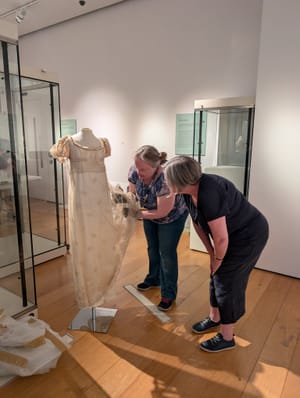Since late August, the City Space at The Arc, Winchester, has been home to an installation of intriguingly powerful proportions. Sensibilities on the Bonnet, produced by Joshua Raffell, Dave Smithers and their Isle of Wight collaborators, has turned heads, attracting visitors with its bombastic, surreal and playful appearance visible from afar. But beneath the bonnet of this show lay complex stories and a fascinating journey.
In this article Joshua Raffell and Dave Smithers tell all about how they created the show.
How did you come up with the idea for this City Space show?
Kirsty Rodda approached us to make a solo show inspired by the main show, Beyond the Bonnets, which explores twelve female characters from Jane Austen's novels, celebrating 250 years since she was born. The word bonnet struck me. Using car bonnets was a play on the word bonnets, bringing bonnets to a modern audience. I remember having conversations with the curator about the complexity around the exploitation of women selling cars on bonnets. I wanted to explore the possibility of women re-owning these spaces with sensitivity, the engine being the metaphor for the driving force of women living in Winchester. I was keen to create a female form inspired by Niki de Saint Phalle’s Nanas. The work had to portray women celebrating their achievements and their continued struggles.
These works are so monumental and multi-faceted, could you tell us more about the process of their creation?
Thank you, if the work is monumental and multi-faceted, it is because the lives of working in Winchester are those things. We interviewed working women and appreciated the time and stories we were told. One woman described how she wanted to become a car mechanic. Doing the YTS (Youth Training Scheme), they took down the saucy images of women and introduced a swear box. After the first month, she asked them to remove the swear box as she was skint. She did not become a car mechanic, which was something that she regretted, but her actions paved the way for women to take up jobs in male-dominated places.
The chrysalis revolves in one of the figure's heads, holding a crocheted hook, as needlework is perceived as women's work, yet the figure sits on the bonnet spraying graffiti, and the word 'sensibilities on the bonnet' obscure the very idea of how a woman should behave and is a humorous twist to Jane Austen’s writing. This figure is covered in aspirational images from magazines and snails cut out from a book called 'bitch' by Lucy Cook, a scientist fighting against the male gaze of science, questioning the true role of female animals. She also highlights the absurdity of their only being two sexes, a theme that often recurs in my own work.

The earliest conversations I had with Kirsty were around the funding of the project, stating that there was no funding, so Dave set about applying for Arts Council funding, which we were fortunate to get. This allowed ideas to flow. From the Isle of Wight, I had a fabricator in mind to create a car bonnet. Talking to him, it turned out that his dad worked on the Austin-Healey Sprite, otherwise known as the frog eye. Chris found an original mould and even an original bonnet which had some damage, but he could fix it. I suggested leaving the damage and working it into the piece, creating a figure mending the bonnet. The light in the head reflects the soroptimists' work, a voice for girls and women supporting women locally and internationally. This figure is covered in Jane Austen novels and wedding rings cut out of Jane Austen novels; the books always end with the female characters getting married.
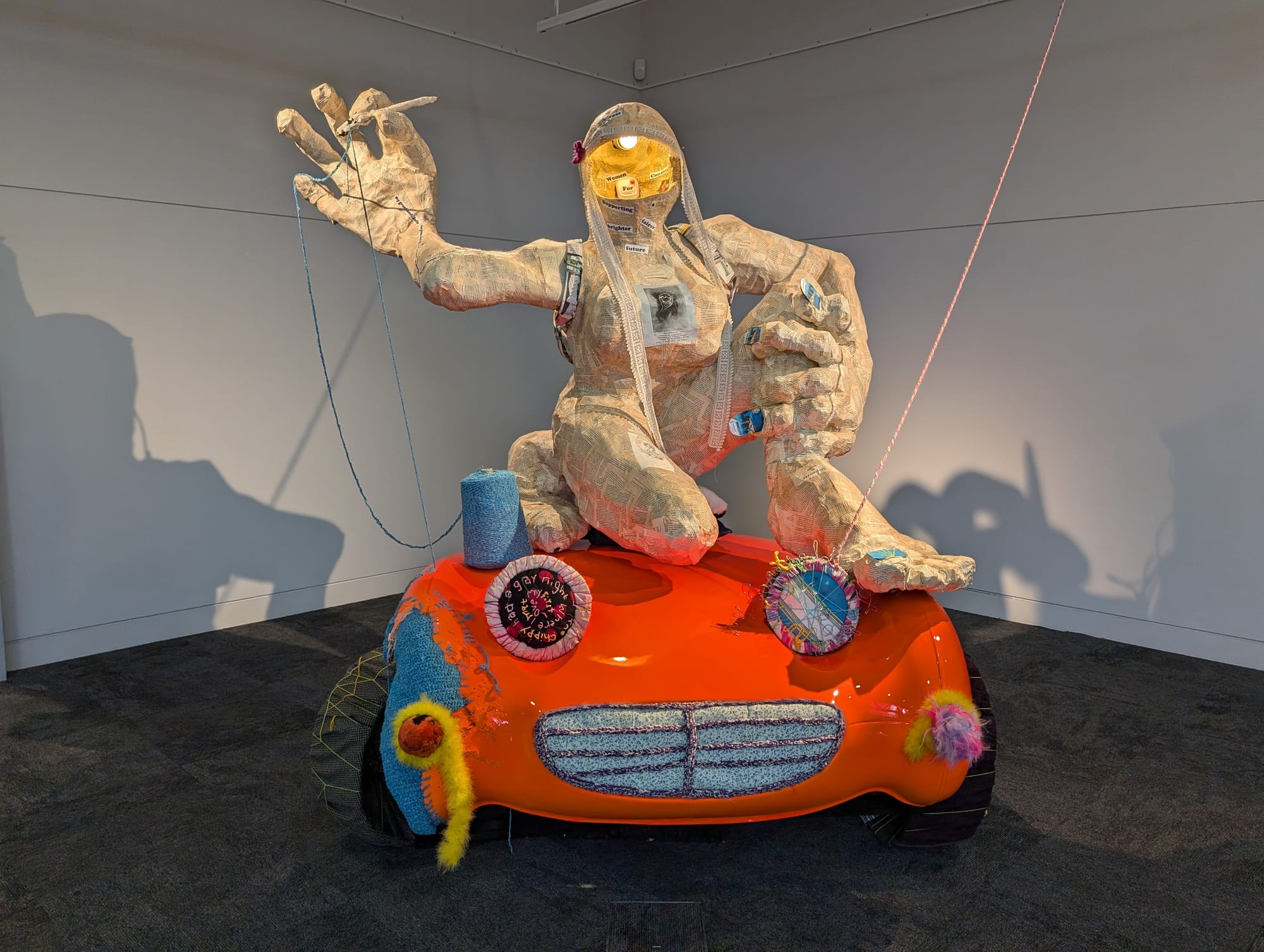
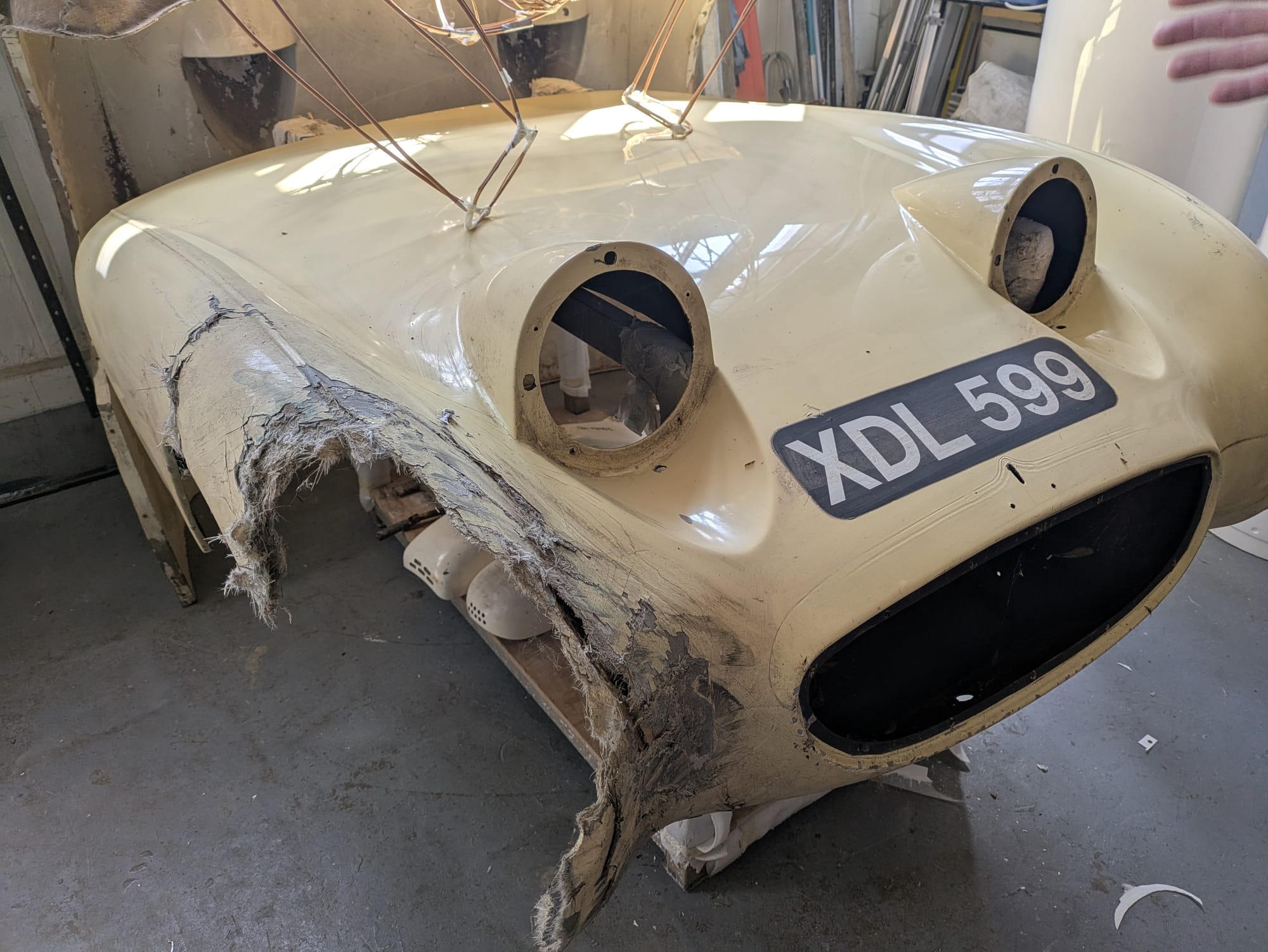
The third figure was inspired by a young woman who teaches boxing, something she wanted to do from an early age. She was discouraged by her parents and pursued another path. Later, a job came up at the boxing club and she went for it. There were only two or three girls in the club, so she set up a club called Girls in Gloves and now she has eighteen to twenty girls learning to box, which is a great achievement. Something she is proud of, but it also means that her parents were very proud to see her excelling in what she does. This piece has a mirror ball with the names of the estates we visited lighting up the places that we overlook. Beauty magazines and music notes from a dissertation from a young woman exploring misogyny in the music world cover the work.
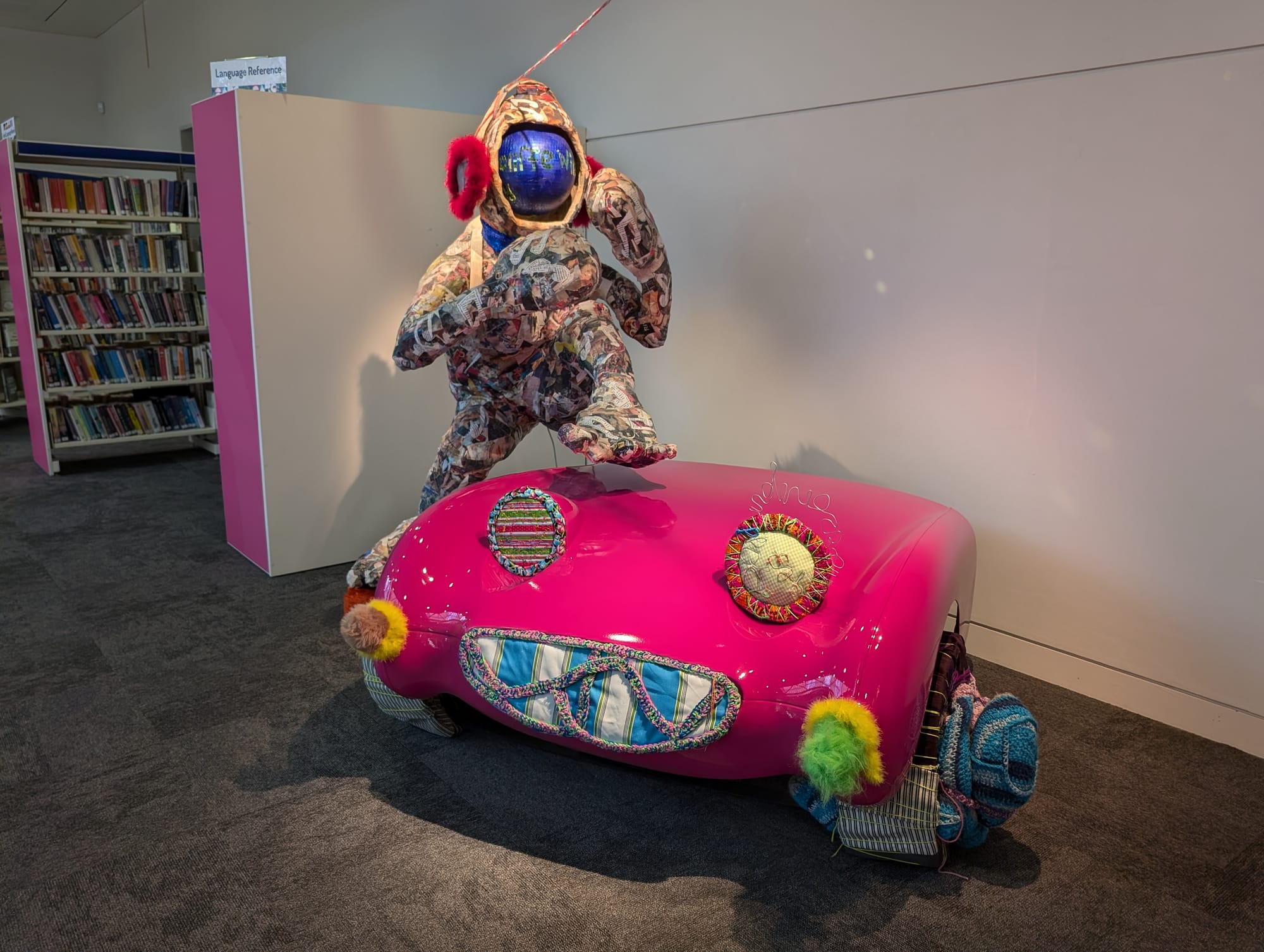
What have you learned about Winchester through this work?
We know Winchester well because I was born here, and I've got family who still live in Winchester on the Winnall estate and the Highcliffe estate, where I was born. At 18/19, I imagined that I’d never actually come back beyond family events, and to be working here has almost allowed me to fall in love with Winchester again because it is a very special place and beautiful city.
For this project, we followed a format that we used in Portsmouth and are currently using in the New Forest of mapping affluence and poverty using an indices of multiple deprivation, which the government produced for tiny areas that make up Winchester. There are about 70 Super Output Areas, making up Winchester. The vast majority, bar four, are in the top ten or twenty percent richest in the country. But four areas in Winchester come under the bottom 30% most deprived areas in the country, which puts them on a level pegging with parts of Islington and parts of Stretton and Southwark in London. These are indicators of people living in greater need than anywhere else across the country. Identifying ordinary people living in affluent areas interests us. Somebody might be working incredibly hard but still can’t afford to buy a house, so we were interested in finding out where those people are most likely to be living. We identified the Highcliffe, Winnall, Stanmore and Kings Worthy estates as four of those areas.
It’s not the Winchester the tourists would normally come to. We started off in Stanmore, walked to Highcliffe and then over St Giles hill to Winnall, and then the next day we walked out to Kings Worthy and around the estate there. We met ordinary people there. Interestingly, many of them would thank us for coming by after a conversation. If someone came up to me in my street and started asking me questions, I would be thinking, please leave me alone. But actually, the people we met were pleased. We got the sense that not many people came out to tell them about things happening in the city. One woman we met in Kings Worthy was of east Asian heritage, and the text we presented her with was quite complex, and she didn’t understand much, as I might not if given this. But then she said, "Ah, I have bonnets in my garden". Then she showed us her Grannies Bonnets, a kind of flower that she was growing in front of her flat. They were absolutely beautiful.
There were huge opportunities to connect with people in unexpected ways, and we were able to bring some of those stories into the artworks. We learned how layered and complex Winchester is. But also how beautiful, amazing and complex it is as a city. The Soroptimists are an interesting group of women who advocate for women in Britain and beyond, and I think one of the interesting challenges they gave to us was to look not just at data, but also to consider domestic servants in Winchester. Where you have incredible wealth, you have domestic servants, and they often come from east Asian countries or south Asian countries and sometimes South America. They are here on what are near enough modern slavery-type contracts with minimal pay, working incredibly long hours and have restricted freedoms. We were interested in identifying these people as part of our work. The voices came through in our work in different places. We reflected that in the engine that was put together using domestic appliances so things that you could use every day.
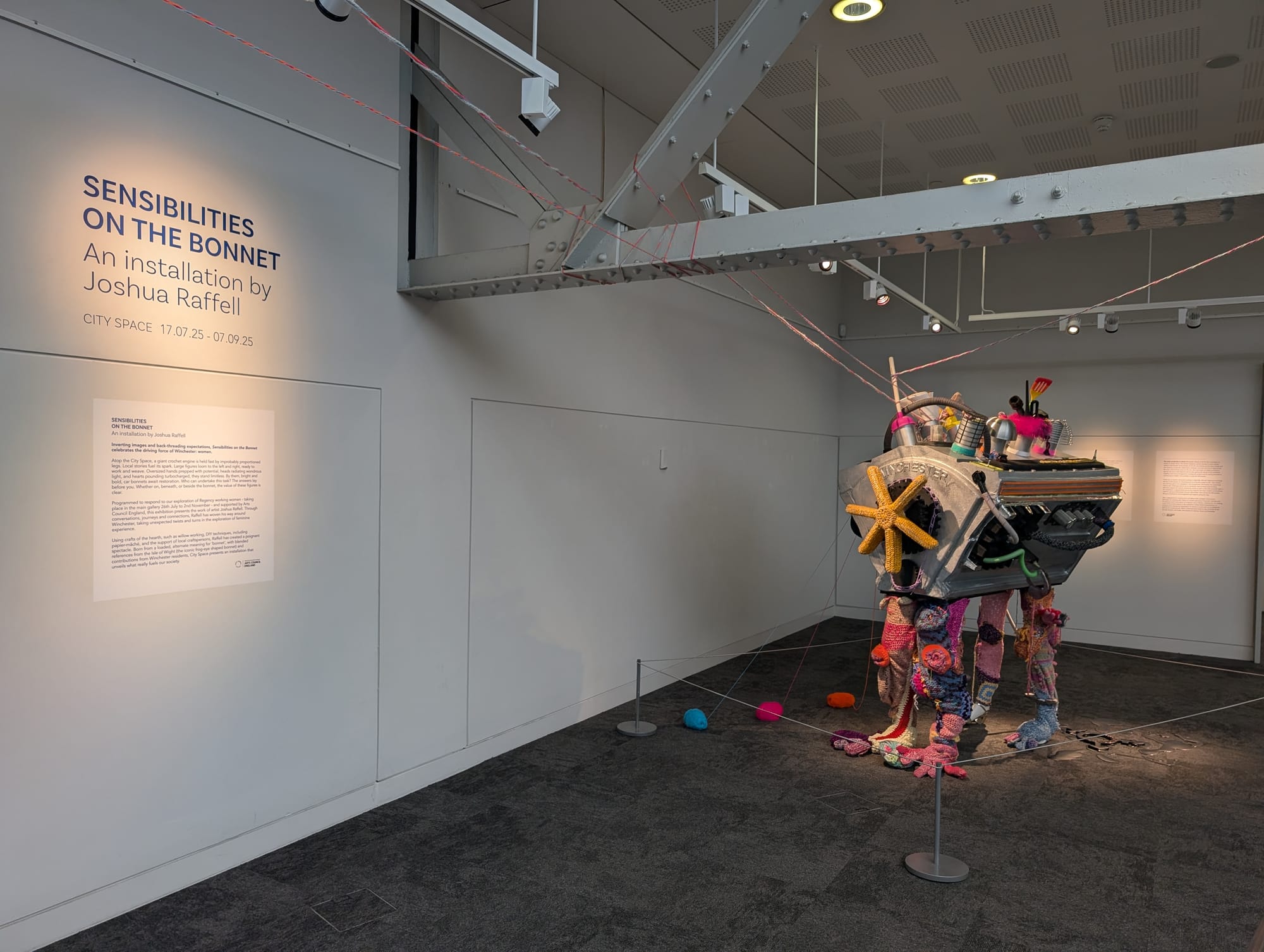
What is next for you?
We have a solo show coming up in London with Studio 1.1 in Shoreditch, which is called the hypocrisy of meritocracy and plays with similar themes to what we looked at in Portsmouth and looks at deprivation in areas of wealth, so that is exciting. We also have residency for two weeks in the New Forest at Spud Works in September. I am going to be doing a sponsored walk from Key Arts to Yarmouth on the Isle of Wight, raising money for the foodbank on the Isle of Wight and then we are going to go from Lymington to Sway, raising money for the foodbank and Waterside, which is on the border of the New Forest. That is really exciting. In November, I’ll have a solo show for a month at Spudworks.
Is there anything else you would like to add?
Thank you so much for this amazing opportunity. It has been amazing working with Kirsty Rodda and John Reed, the curators of City Space and just a big thank you to all the contributors to the project. It has been fascinating just talking to so many people and having so much positive feedback.
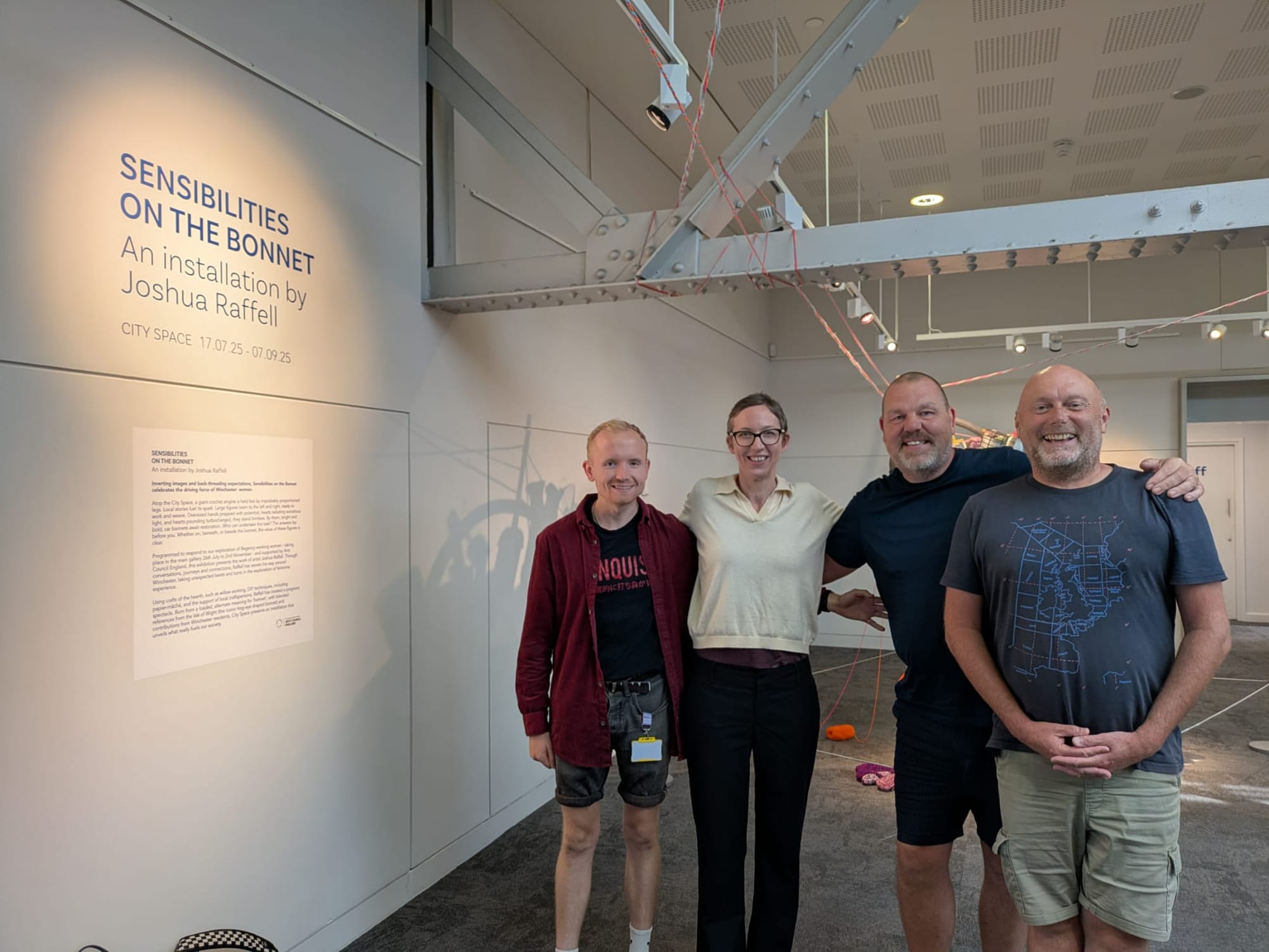
Sensibilities on the Bonnets runs until 7 September.

